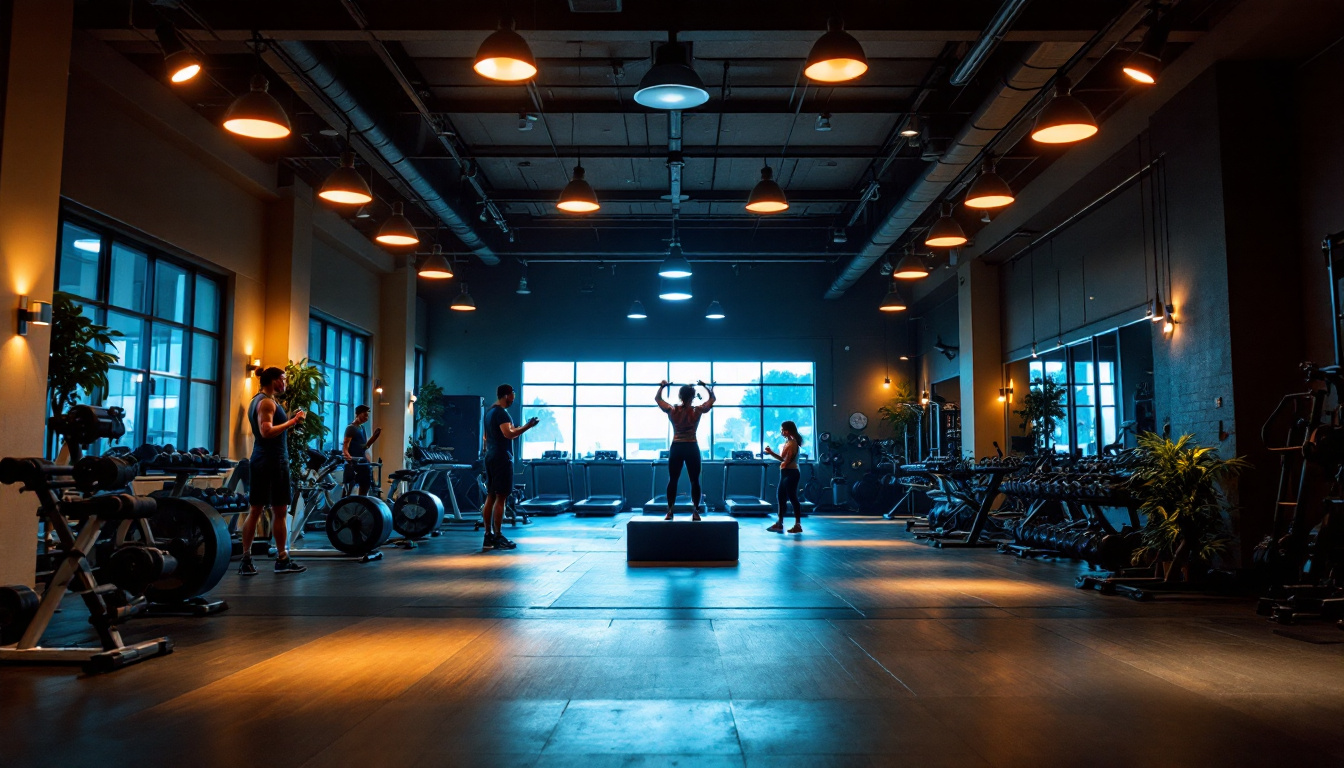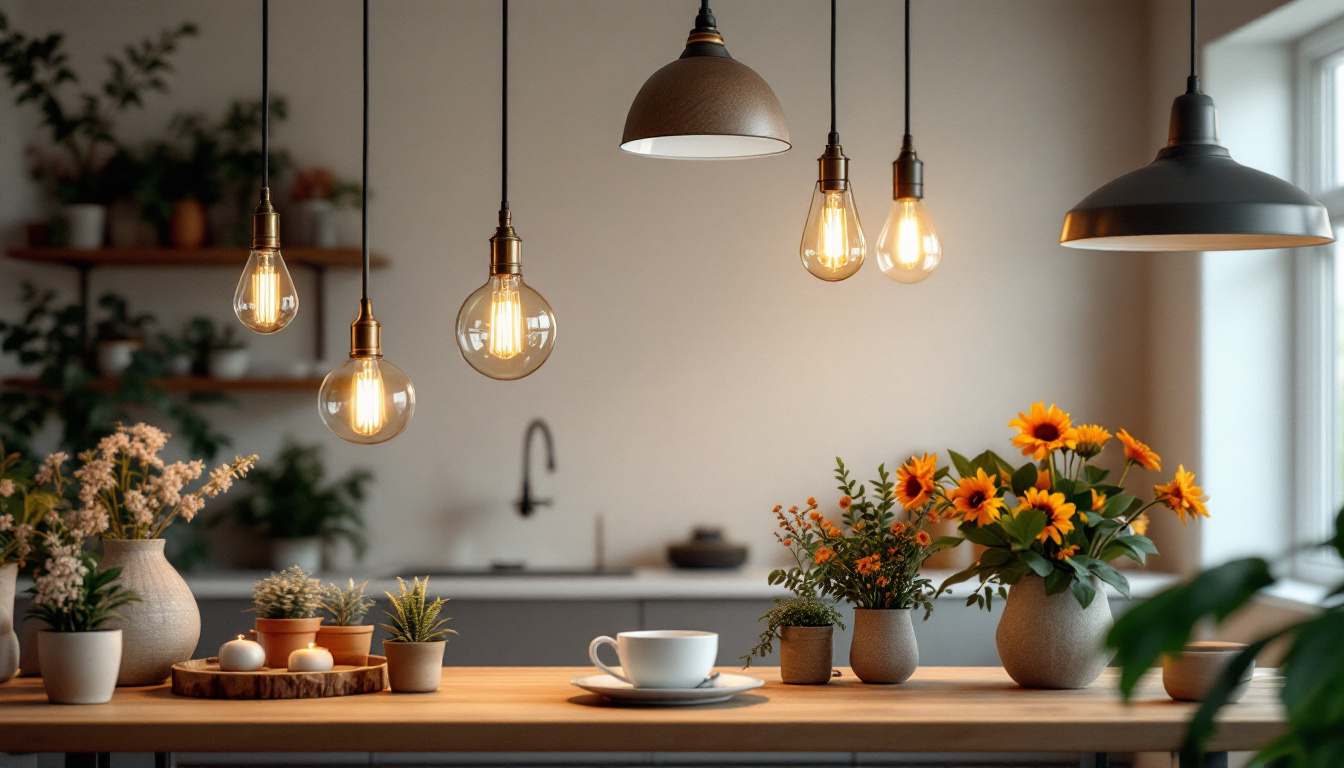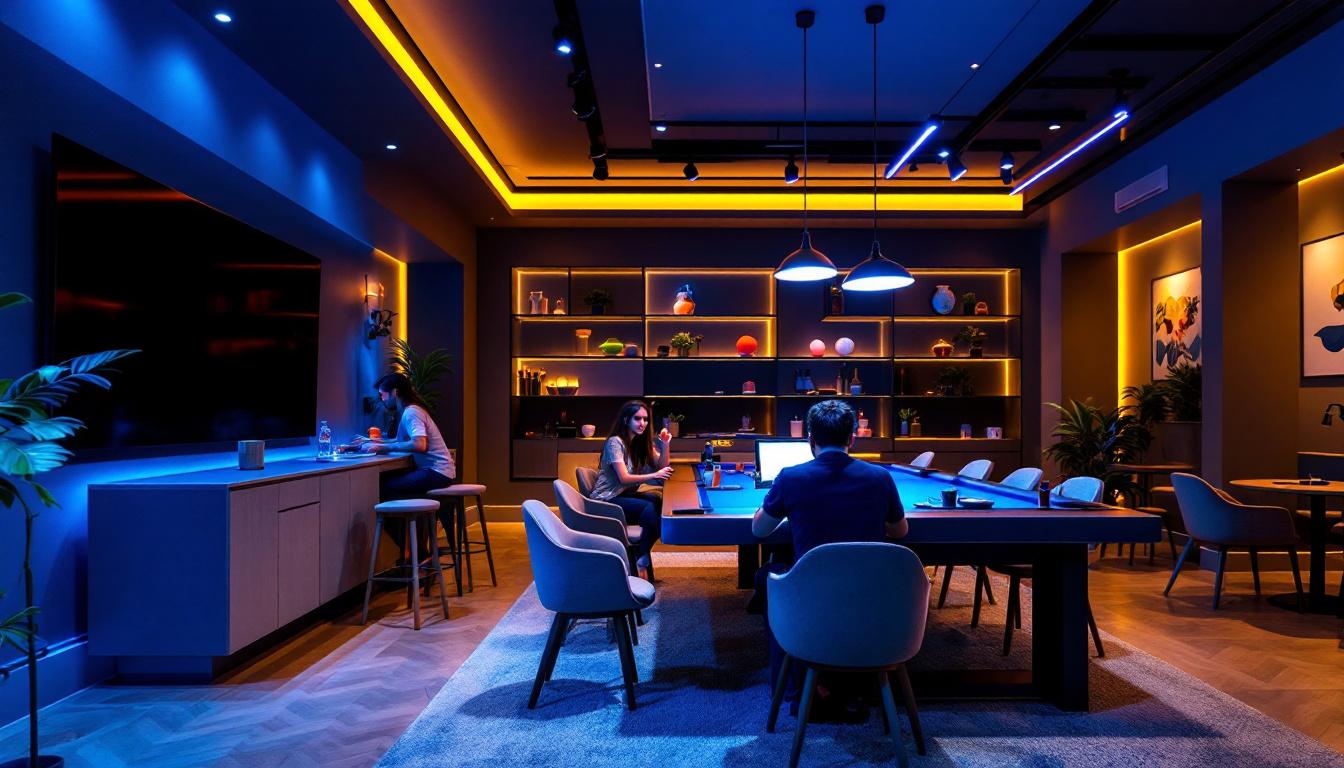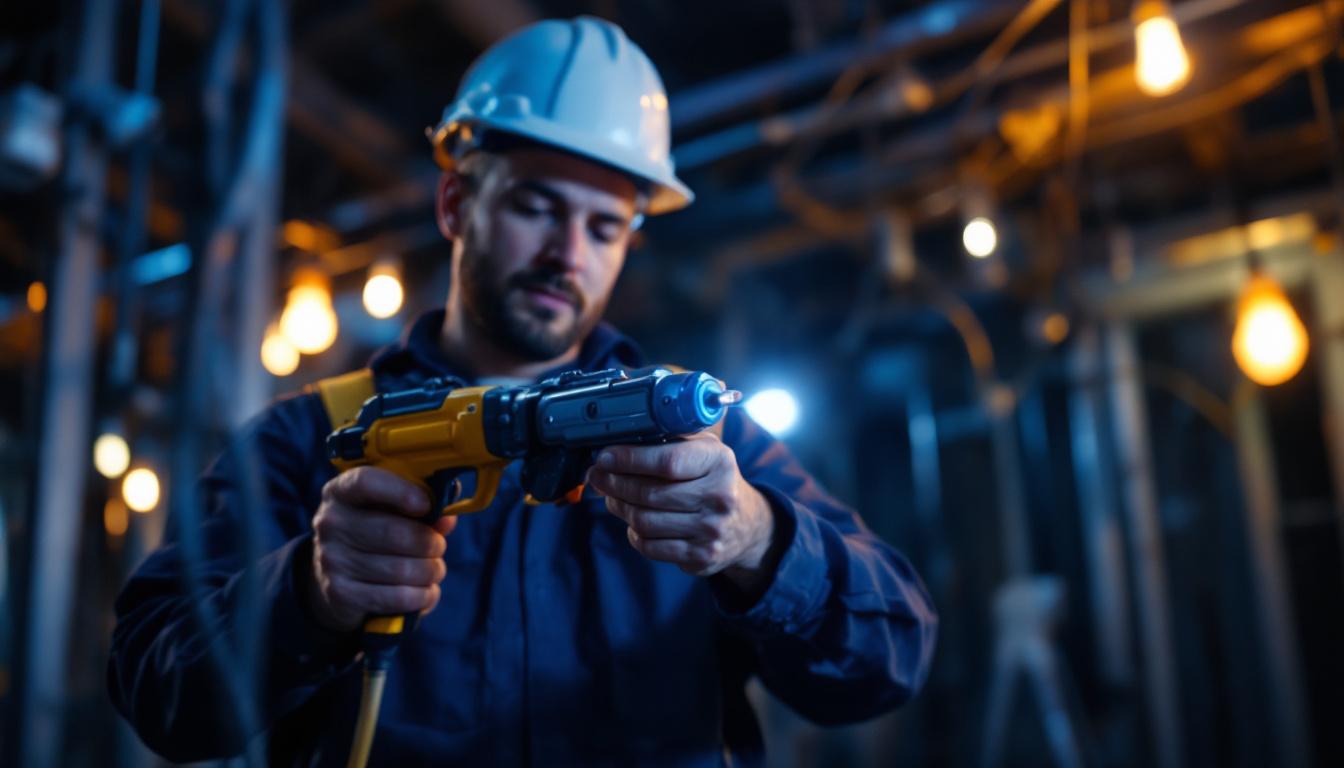
When it comes to designing the perfect gym environment, lighting plays a pivotal role in enhancing the overall experience for users. However, many lighting contractors often overlook crucial aspects that can significantly impact the functionality and ambiance of a gym. This article delves into the essential elements of gym lighting that should not be neglected, ensuring that contractors can deliver optimal results for their clients.
Lighting in a gym is not merely a functional necessity; it is a key element that influences mood, performance, and safety. The right lighting can motivate individuals, enhance their workout experience, and even reduce the risk of accidents. Understanding the psychological and physical effects of lighting is essential for any lighting contractor.
Lighting affects how individuals feel in a space. Bright, well-distributed light can invigorate and energize gym-goers, while dim lighting may create a more relaxed atmosphere, suitable for yoga or meditation areas. It is crucial to consider the type of activities that will take place in different areas of the gym and tailor the lighting accordingly.
Moreover, the color temperature of the lights can influence mood. Warmer tones can create a cozy environment, while cooler tones can enhance alertness and focus. Lighting contractors should be aware of these nuances to create an environment that supports the gym’s intended purpose. For instance, during high-intensity interval training (HIIT) sessions, cooler lighting can stimulate energy and motivation, whereas softer, warmer lighting can be more appropriate for cooldown areas, promoting relaxation and recovery.
In addition to the psychological impact, the functionality of gym lighting cannot be overstated. Proper illumination is vital for safety, especially in high-traffic areas or where heavy equipment is used. Insufficient lighting can lead to accidents and injuries, which can have serious repercussions for both gym owners and users.
Contractors must ensure that all areas, including free weight zones, cardio sections, and group fitness studios, are adequately lit. This involves not only choosing the right fixtures but also determining their placement to minimize shadows and ensure even distribution of light. Furthermore, the use of motion sensors and dimmable lighting can enhance energy efficiency while providing flexibility in lighting levels based on the time of day or the number of people present. This adaptability can significantly enhance the overall user experience, making the gym more inviting and functional.
Additionally, the integration of natural light can play a pivotal role in gym design. Large windows or skylights can provide an influx of daylight, which has been shown to boost mood and energy levels. Incorporating views of the outdoors can also create a more pleasant workout environment, helping individuals feel more connected to nature, even in an indoor setting. This blend of natural and artificial lighting can create a dynamic atmosphere that evolves throughout the day, further enhancing the workout experience.
While many lighting contractors understand the basics of lighting design, several common oversights can compromise the effectiveness of a gym’s lighting system. Identifying and addressing these issues can lead to a more successful project and satisfied clients.
One of the most significant oversights in gym lighting design is the failure to implement layered lighting. Layered lighting involves using multiple sources of light, including ambient, task, and accent lighting, to create a balanced and functional environment.
Ambient lighting provides general illumination, while task lighting focuses on specific areas, such as weightlifting stations or cardio machines. Accent lighting can highlight specific features, such as mirrors or artwork. By combining these different layers, contractors can create a dynamic space that meets various needs and enhances the overall aesthetic. Furthermore, the strategic placement of these lighting layers can influence the mood and energy of the gym. For instance, brighter, cooler lights in cardio areas can invigorate users, while warmer, softer lights in stretching or yoga zones can promote relaxation and focus.
In today’s eco-conscious world, energy efficiency is a crucial consideration for any lighting project. Many contractors overlook the importance of selecting energy-efficient fixtures and technologies, which can lead to increased operational costs for gym owners.
LED lighting, for example, offers significant energy savings and has a longer lifespan compared to traditional incandescent or fluorescent bulbs. By recommending energy-efficient options, contractors can help their clients reduce their carbon footprint and save money on utility bills, making the gym more sustainable in the long run. Moreover, integrating smart lighting systems that adjust based on occupancy or natural light levels can further enhance energy savings. These systems not only contribute to lower energy costs but also align with the growing trend of sustainability in fitness facilities, appealing to environmentally conscious gym-goers.
Maintenance is another critical aspect that is often overlooked in gym lighting design. High ceilings and hard-to-reach fixtures can make maintenance a daunting task. Contractors should consider the ease of access to fixtures when designing the lighting layout.
Choosing fixtures that require minimal maintenance, such as those with long-lasting LED bulbs, can save gym owners time and money. Additionally, incorporating features like dimmers or smart lighting controls can enhance usability and reduce wear on fixtures, prolonging their lifespan. It’s also beneficial to establish a regular maintenance schedule to ensure that all lighting elements are functioning optimally. Regular checks can prevent unexpected outages and maintain the gym’s ambiance, which is crucial for a positive user experience. Furthermore, educating gym staff on basic maintenance practices can empower them to address minor issues promptly, ensuring the lighting remains effective and inviting for all members.
The selection of lighting fixtures is a fundamental aspect of gym lighting design. The right fixtures can enhance functionality, aesthetics, and energy efficiency. However, contractors must consider various factors when making their selections.
Different areas of the gym require different types of lighting fixtures. For example, high bays are ideal for large open spaces, such as weightlifting areas, where high ceilings are common. These fixtures provide powerful illumination and can cover large areas effectively.
In contrast, recessed lighting can be an excellent choice for cardio areas, providing a clean and modern look while ensuring adequate light levels. Additionally, wall-mounted fixtures can be beneficial in group fitness studios, where adjustable lighting may be necessary to accommodate various activities.
Another critical factor to consider is the Color Rendering Index (CRI) of the fixtures. The CRI measures how accurately a light source displays colors compared to natural light. A higher CRI is essential in a gym setting, as it helps users see their form and technique more clearly, which is especially important in activities like weightlifting or yoga.
Contractors should aim for fixtures with a CRI of 80 or higher to ensure that gym-goers can see themselves accurately in mirrors and maintain proper form during workouts.
Lighting controls are an often-underutilized aspect of gym lighting design. By incorporating advanced lighting control systems, contractors can enhance the flexibility and functionality of gym spaces.
Smart lighting solutions allow gym owners to adjust lighting levels based on the time of day or specific activities. For instance, during high-energy group classes, brighter lighting can create an invigorating atmosphere, while softer lighting may be more appropriate during yoga sessions.
Additionally, smart systems can be programmed to automatically adjust based on occupancy, reducing energy consumption during off-peak hours. This not only saves money but also contributes to a more sustainable gym environment.
Incorporating dimmer switches and zoning capabilities can further enhance the versatility of gym lighting. By creating different lighting zones, contractors can tailor the lighting to suit various activities and preferences. For example, the lighting in the weightlifting area can be brighter, while the stretching area can have softer, more ambient lighting.
Dimmer switches allow for quick adjustments, enabling gym staff to create the desired atmosphere for different classes or events. This adaptability can significantly enhance the user experience and make the gym more appealing to a broader audience.
Safety is paramount in any gym environment, and lighting plays a crucial role in ensuring that users can navigate the space safely. Contractors must be aware of safety regulations and compliance standards when designing gym lighting.
Emergency lighting is a critical component that should never be overlooked. In the event of a power failure or emergency, adequate emergency lighting can guide users to safety. Contractors should ensure that emergency lights are strategically placed throughout the gym, particularly in areas with heavy foot traffic.
Moreover, regular maintenance and testing of emergency lighting systems are essential to ensure they function correctly when needed. Contractors should discuss these requirements with gym owners to ensure compliance with local regulations.
Glare can be a significant issue in gyms, particularly in areas with large windows or reflective surfaces. Excessive glare can lead to discomfort and even accidents. Contractors should consider the placement of fixtures and the use of diffusers to minimize glare and create a more comfortable environment for users.
Additionally, selecting fixtures with appropriate beam angles can help direct light where it is needed most while reducing the potential for glare. This attention to detail can significantly enhance the overall user experience in the gym.
In conclusion, gym lighting is a multifaceted aspect of design that requires careful consideration and expertise. Lighting contractors play a vital role in creating environments that are not only functional but also engaging and motivating for users. By addressing common oversights, selecting appropriate fixtures, and implementing advanced lighting controls, contractors can deliver exceptional results that meet the needs of gym owners and their clients.
Ultimately, a well-designed lighting system can enhance the overall gym experience, promote safety, and contribute to the success of the facility. By staying informed about the latest trends and technologies in gym lighting, contractors can position themselves as leaders in the industry and provide their clients with the best possible solutions.
Ready to elevate your gym lighting designs to the next level? At LumenWholesale, we provide lighting contractors with the highest quality, spec-grade lighting products at unbeatable wholesale prices. Our extensive selection is designed to meet the most rigorous industry standards, ensuring that your gym environments are not only well-lit but also inspiring and safe. Say goodbye to inflated markups and hello to hassle-free bulk buying with free shipping. Don’t compromise on quality or value—choose LumenWholesale for premium lighting solutions that blend affordability with exceptional performance. Discover our wholesale lighting deals and start saving today!

Discover the ultimate guide to LED Tube Lamps T8 for lighting contractors, highlighting benefits like energy savings up to 50%, installation tips, and industry insights—boost your projects today!.

Discover essential insights and expert tips for lighting contractors on hanging lights effectively.

Discover how choosing the right game room light fixtures can streamline projects for lighting contractors, saving both time and money.

Discover effective strategies for lighting contractors to tackle common challenges with electric cable pullers.